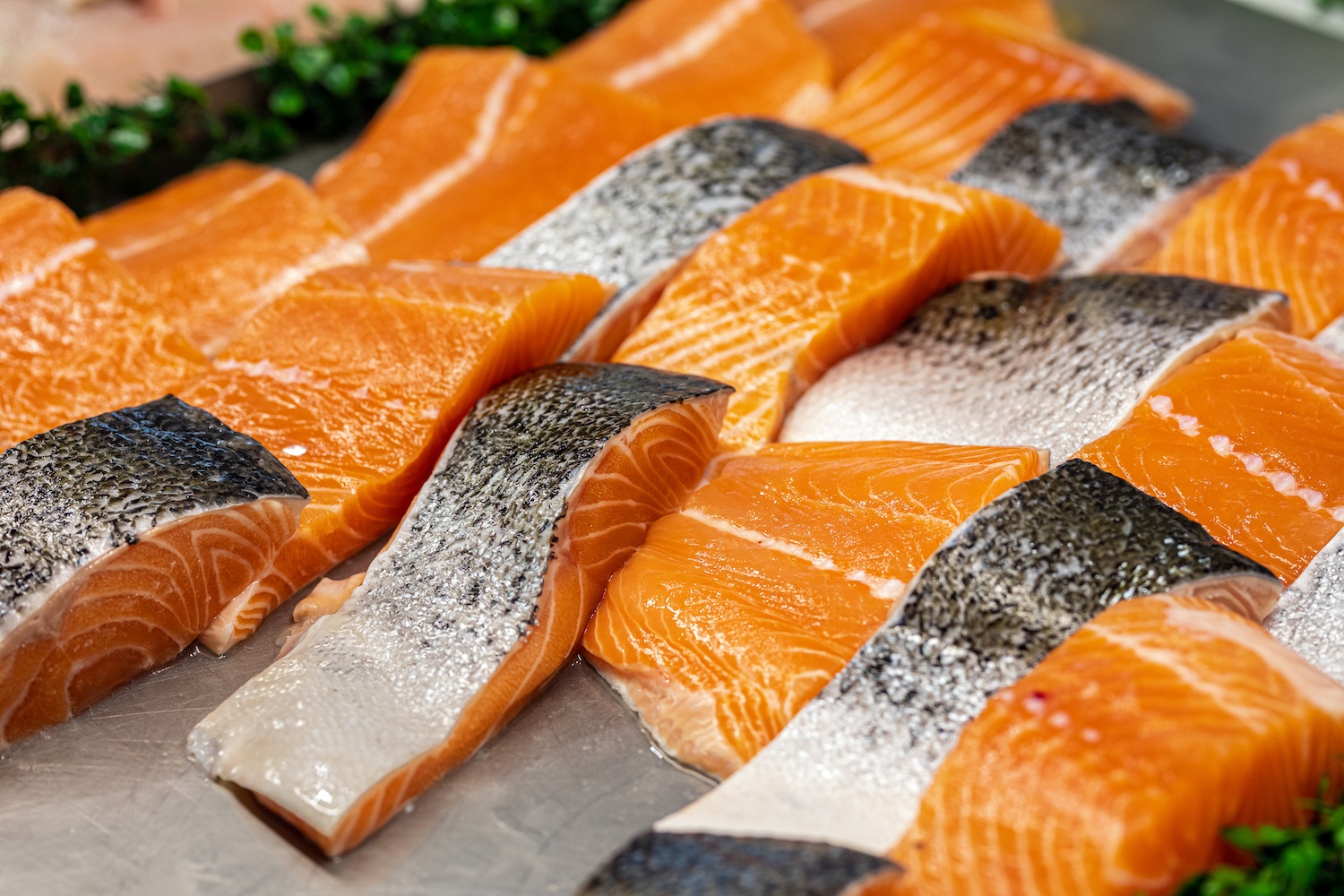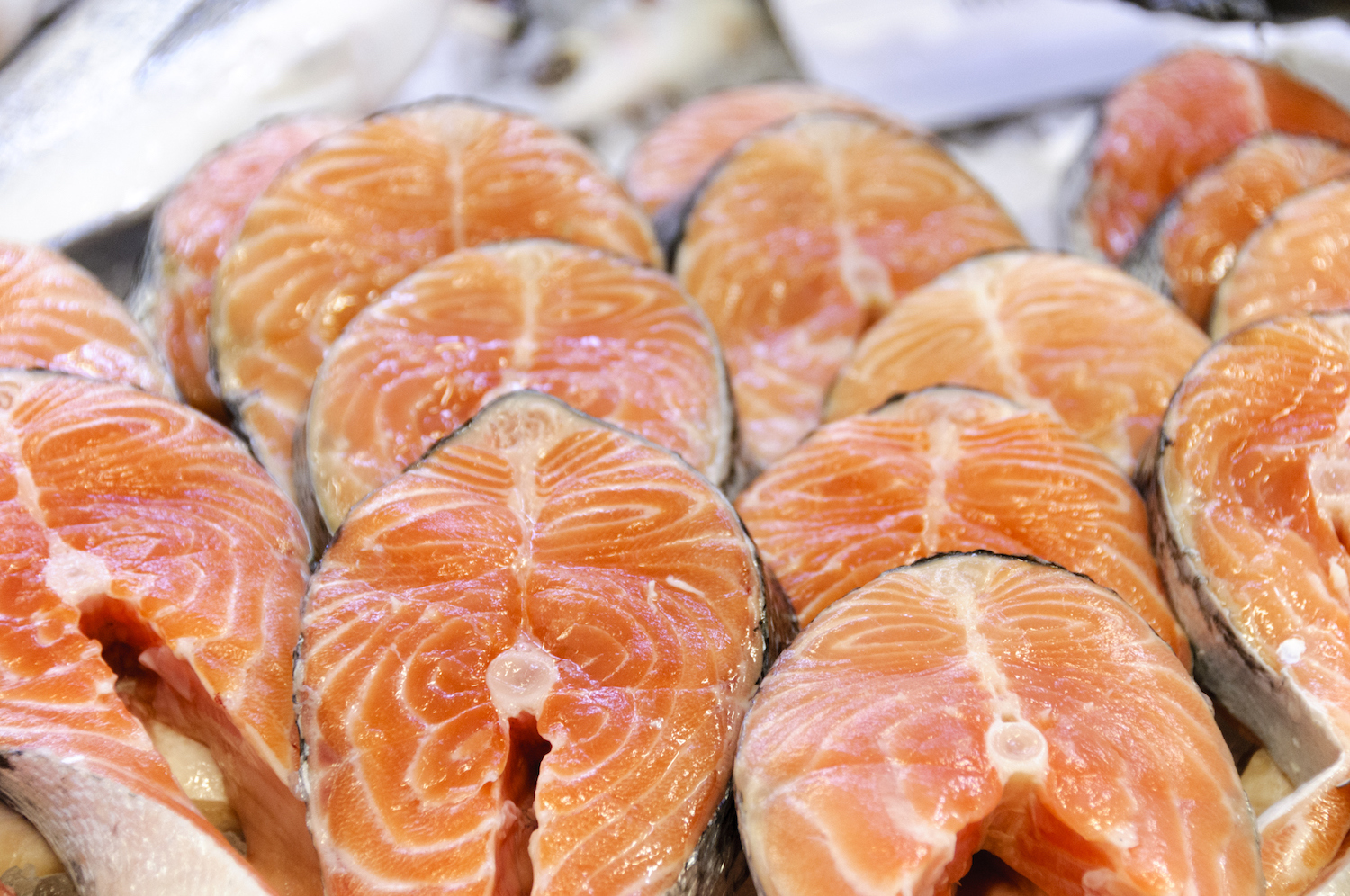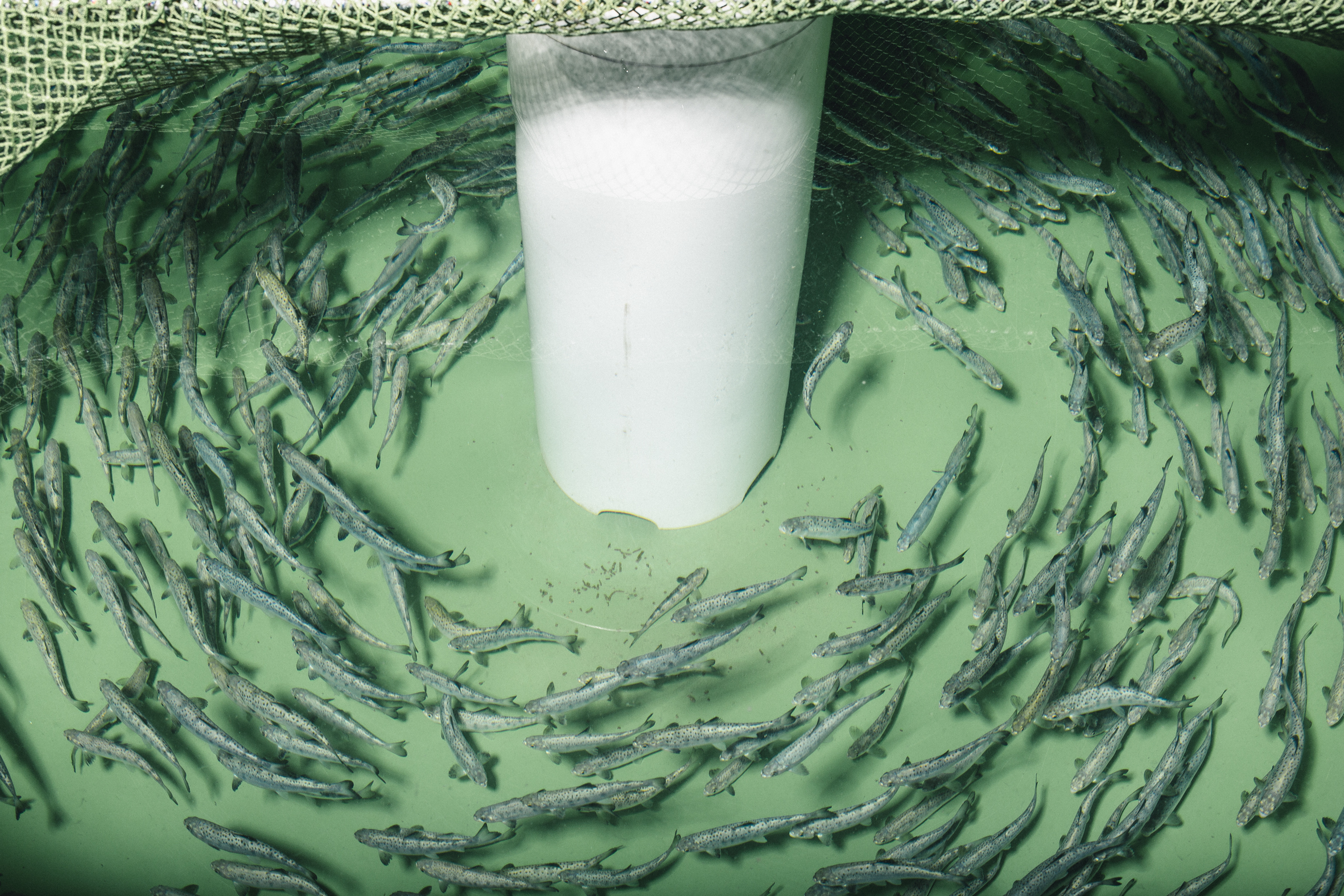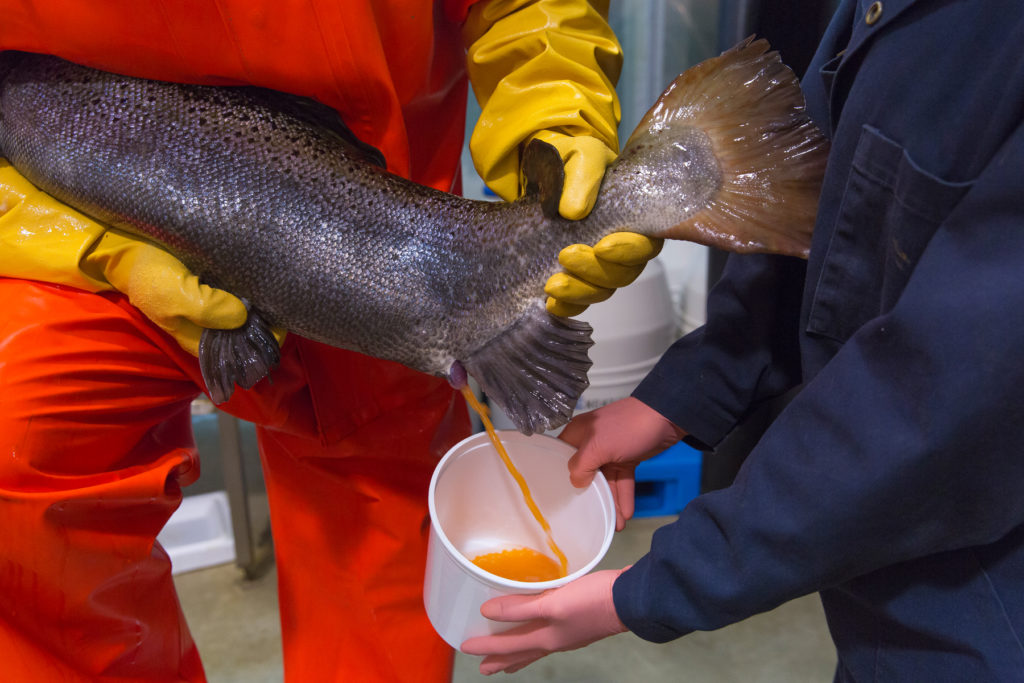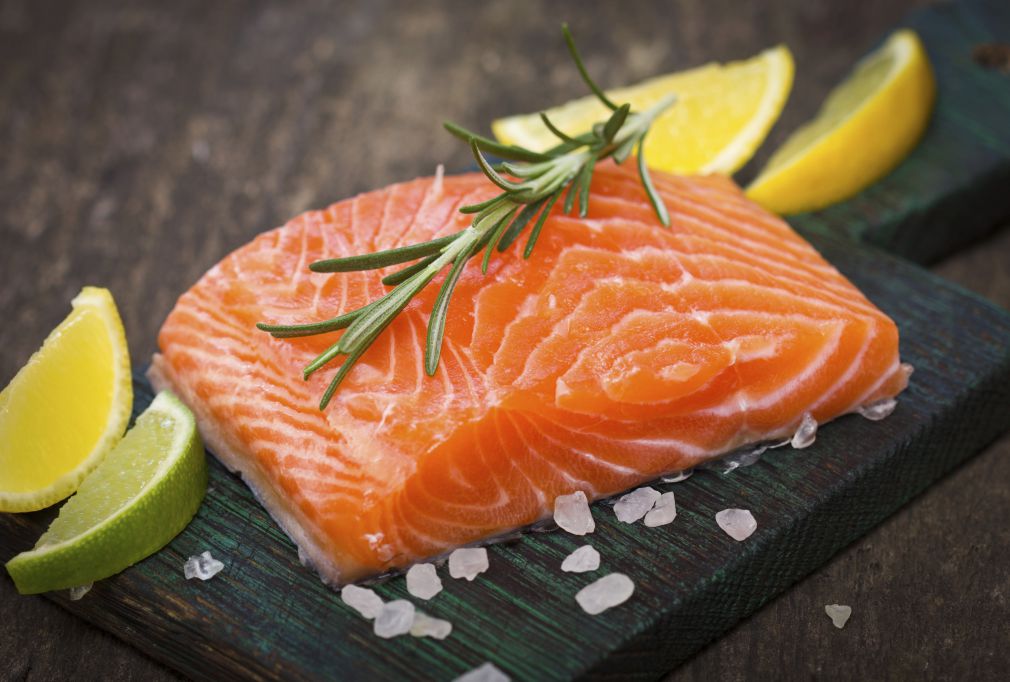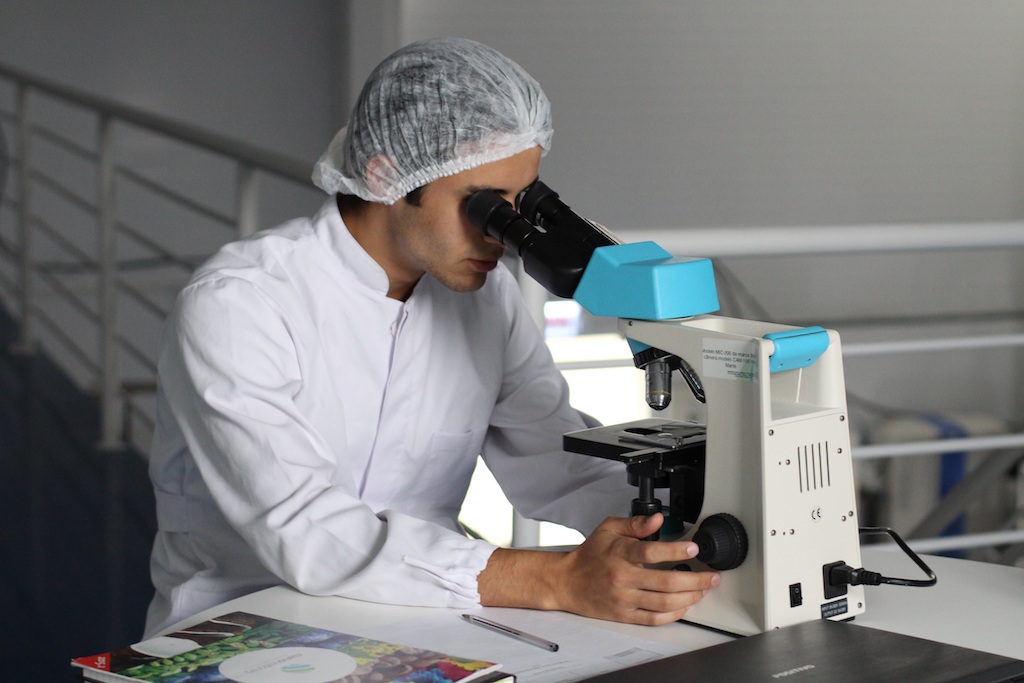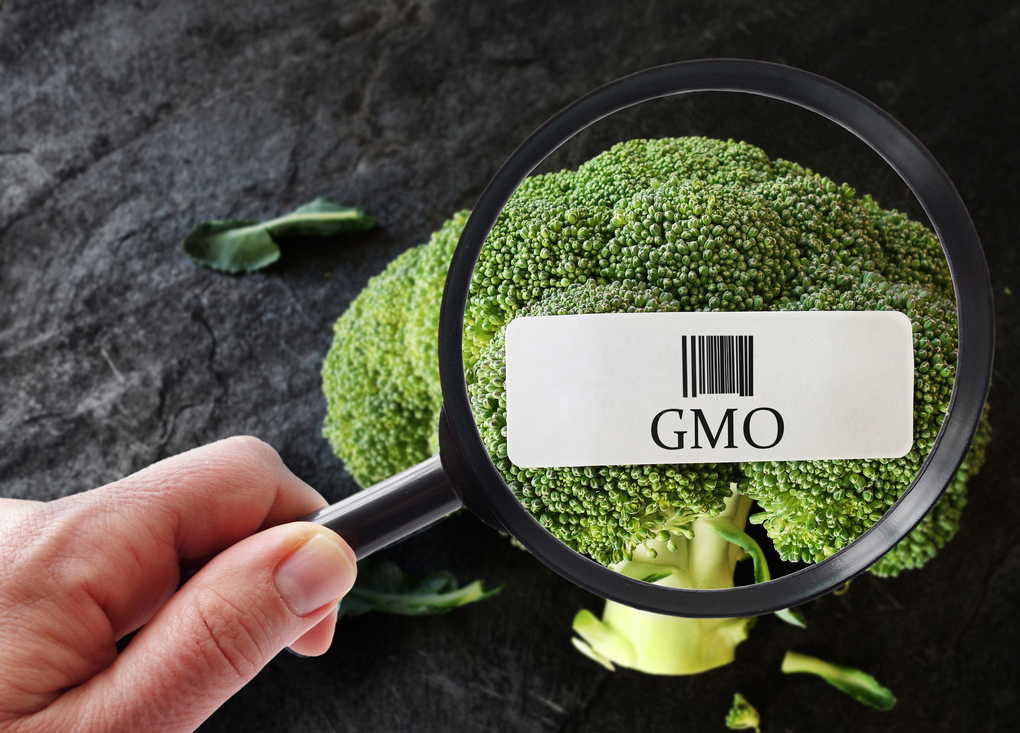Though GM salmon currently pose little threat to their wild counterparts, the ruling suggests longer-term consequences haven’t been fully considered. Advocates see the case as crucial to the future of regulating genetically modified animals.
A federal judge ruled on Thursday that the Food and Drug Administration (FDA) should have more thoroughly considered the potential for genetically modified (GM) salmon to escape their pens and threaten other salmon before approving them for sale in the United States. It’s the latest judgment in a lawsuit that has challenged everything from the agency’s authority to regulate genetically modified animals to the classification of fast-growing fish as “veterinary medicine.”
The FDA first approved AquaBounty’s AquAdvantage salmon back in 2015. It’s the first-ever genetically modified animal to be green-lighted in this country, and it grows about twice as fast as conventionally bred salmon. Yet five years later, the product has yet to hit the market: In 2016, despite having approved the salmon, FDA banned its import while Congress wrangled over GM labeling guidelines. That ban wasn’t lifted until early 2019. Then, the company had to move the harvested-in-Canada eggs to an indoor growing facility in Indiana, where they’d be hatched and grown into full-sized fish. They were initially projected to hit the U.S. market in late 2020. (Canadians have been noshing on GM fish for years—go figure.)
Now, though the fish are swimming around far from the coast in their Indiana tanks, Judge Vince Chhabria of U.S. District Court for the Northern District of California penned a decision that rests on the possibility that they could (theoretically) one day escape into the ocean and harm wild salmon. It’s not as far-fetched as it sounds: The judge pointed out that as the industry inevitably expands, the agency might be tempted to approve facilities that are located in the open ocean. That’s the kind of situation regulators have to worry about, according to the ruling—suggesting that future companies seeking to market meat from GE animals may face increased scrutiny regarding long-term potential environmental consequences.
“This case did not call into question FDA’s approval regarding the health and safety of our AquAdvantage salmon.”
According to an emailed statement from AquaBounty President and CEO Sylvia Wulf, the decision will have no impact on the company’s current operations on Prince Edward Island, Canada, where it produces its eggs, or in Indiana, where it raises (and will soon harvest) its salmon for sale. The company is also planning a new farm in landlocked Kentucky. While Wulf noted that the company is “disappointed with some of the conclusions reached in the judge’s decision,” she also insisted that nothing about the ruling fundamentally threatens the legal status of the company’s product.
“This case did not call into question FDA’s approval regarding the health and safety of our AquAdvantage salmon,” she wrote. “The focus of this decision was on the potential environmental impacts, and the judge confirmed the ‘low’ threat to the environment of our salmon.”
Specifically, Judge Chhabria’s decision rested on a gap in FDA’s analysis of the potential risk the salmon pose to the environment. (The agency is required to take environmental impact into account under both the National Environmental Policy Act, or NEPA, and the Food, Drug, and Cosmetic Act, he ruled.) The agency determined that it was unlikely the salmon would escape from their confinement, and that even if they did, they were unlikely to survive in the wild (they are “effectively sterile”), and that even if that happened, they were unlikely to establish populations in the wild. However, the agency didn’t analyze what might happen to wild salmon if the GE salmon somehow escaped, reproduced, and started a free-salmon colony in the open ocean. Therefore, the judge concluded, the FDA’s environmental assessment was incomplete.
“That the court today said that the Food and Drug Administration didn’t do its job by adequately considering the potential environmental risks of this technology is extremely significant.”
The decision acknowledges that this may sound like a technicality. But the judge argues that the initial assessment will become more and more important as the industry grows and companies look to establish salmon farms closer and closer to wild populations. He’s not worried about the indoor farm in Indiana, or the planned farm in Kentucky—instead, he thinks the FDA is obliged to consider what might happen years in the future. As such, the agency will now be required to assess the potential environmental consequences of escaped GE salmon establishing a wild population. (Again, this possibility is extremely unlikely at present, given that they are grown indoors and cannot reproduce.)
“That the court today said that the Food and Drug Administration didn’t do its job by adequately considering the potential environmental risks of this technology is extremely significant,” said Tarah Heinzen, Legal Director of Food & Water Watch, one of the plaintiffs in the case. “And it should go a long way in ensuring that FDA does a much better job of analyzing risk if it considers future approval of similar genetically engineered animals.”
Food & Water Watch and other groups have also argued that FDA does not have authority to regulate GM salmon—a claim rejected by the same judge as part of the same case earlier this year. We wrote about that decision in depth in January.
“We know that FDA can’t fast-track or greenlight these types of approvals without doing its due diligence and following the requirements of NEPA and the Endangered Species Act.”
Yet despite losing their arguments claiming that FDA lacks regulatory authority over GM salmon, Heinzen says this decision is a win. “We know that FDA can’t fast-track or greenlight these types of approvals without doing its due diligence and following the requirements of NEPA and the Endangered Species Act. And we’ll see what happens when they review their analysis, and whether that changes the ultimate outcomes,” Heinzen said. “But just knowing that there will be that additional process in place, and that FDA will have to do a much closer analysis before approving any future GM animals, I think will allow for a much more robust public process, and will allow for potential risks to be much more thoroughly considered,” she added.
In the words of our columnist Pat Clinton, who has been following AquAdvantage salmon since 2015: “They may have thought that being raised in a tank meant they didn’t have to swim upstream against raging currents. They were wrong.”
